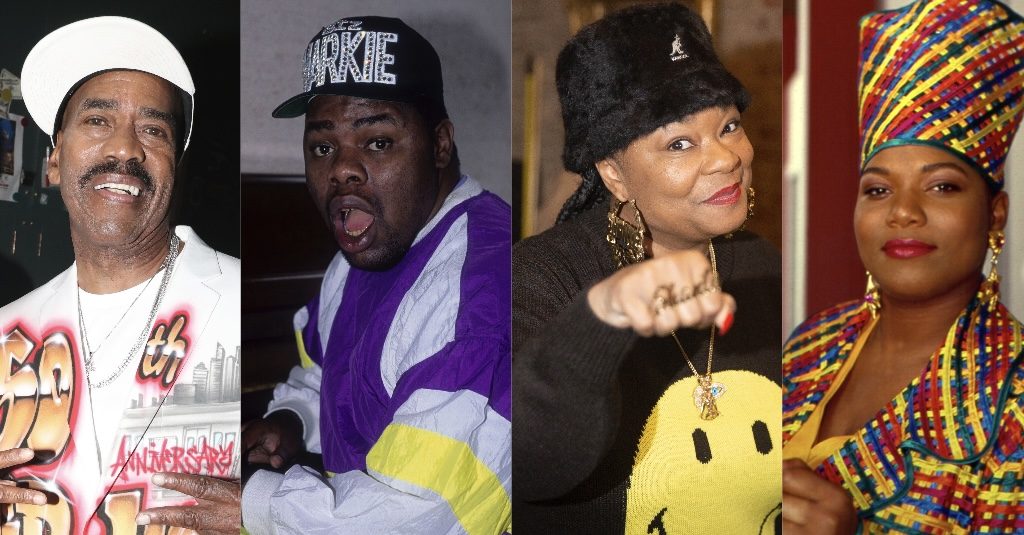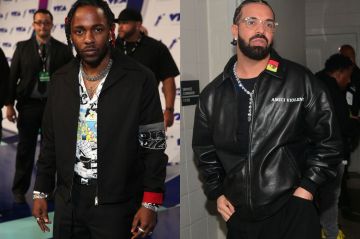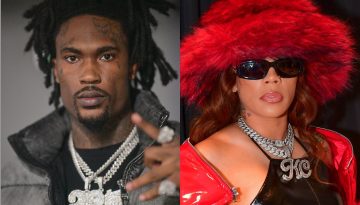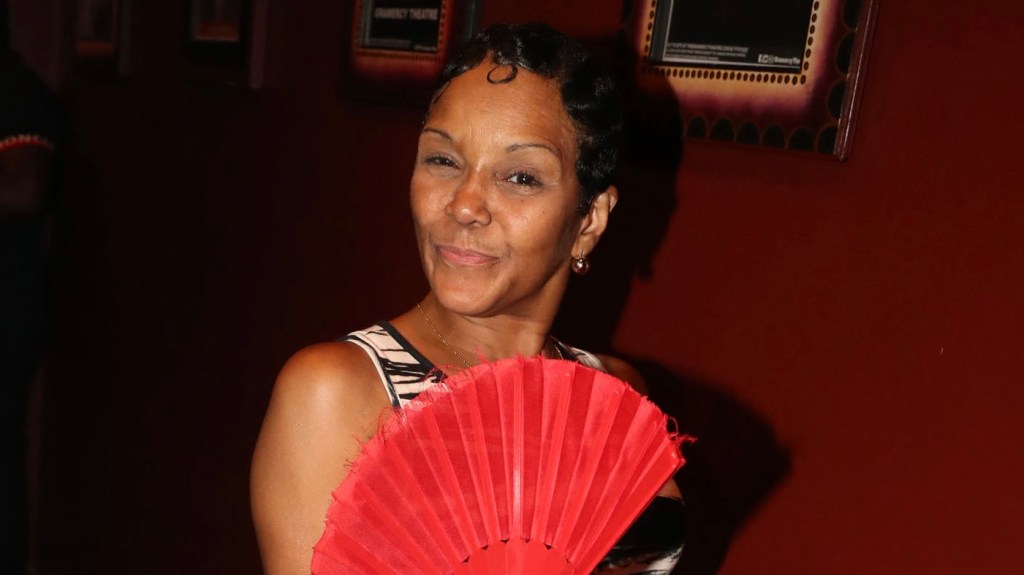
In honor of Hip Hop’s 50th Anniversary, The Shade Room would like to commemorate the moments, the pioneers, and the tools of the art form which have ultimately transcended the music genre, influencing every aspect of modern-day popular culture. Join us each week as we look back at five decades of hip hop.
RELATED: 50 Years Of Fiyah: A Look Back On Hip Hop In The 70s
June 14, 1980: Kurtis Blow Releases “The Breaks,” Hip Hop’s First Record To Go Gold
As hip hop grew its legs, the genre continued down the path of raising social consciousness. The term is defined as “being deeply aware of the people around you in society,” as per Humankind Investment. Kurtis Blow’s “The Breaks,” released on June 14, 1980, depicted this directly. However, not only did the single point to being acutely aware of others. But also aware of the highs or lows one may encounter over life’s course.
The good “breaks” and the bad “breaks,” as depicted in the song’s lyrics.
“If your woman steps out with another man (That’s the breaks, that’s the breaks)And she runs off with him to Japan (That’s the breaks, that’s the breaks)And the IRS says they wanna chat (That’s the breaks, that’s the breaks)And you can’t explain why you claimed your cat (That’s the breaks, that’s the breaks)…”
During a May 2023 interview with Spin, Blow explained how the single came about.
“I remember… Russell Simmons coming to me… And he said to me: ‘The producers want to know what kind of song you want to do for your next single.’ [So I said,] ‘Well, I want to make a song dedicated to all the B-Boys, a song with a lot of breaks in it so the B-Boys can do their thing…’ It also ties into another song that came out in the 1920s where the guy in the song says, ‘Oh hey, Bucko. You say your car got towed away and your lost wife? Yeah, Lester, and you lost your job. Don’t worry, the sun is gonna shine, and it’s gonna be alright. You’ll be okay.’ He was basically just stating the good things and bad things that can happen, sort of like Murphy’s Law.”
According to Billboard, “The Breaks” became the “first rap song to ever be gold-certified by the RIAA.”
“The connotations, the multiple meanings of that song all wrapped into one, and so we went into the studio, and once we finished the song, you just immediately knew this song was going to be a monster hit. I was so, so pleased,” Blow told Spin.
In 1982, Grandmaster Flash & The Furious Five continued the precedent of hip hop contributing to social commentary. The group released the record “The Message.”
“It’s like a jungle sometimes / It makes me wonder how I keep from goin’ under / Broken glass everywherePeople pissin’ on the stairs, you know they just don’t care / I can’t take the smell, can’t take the noise / Got no money to move out, I guess I got no choice”
According to SongFacts, “The Message” took “Hip-Hop records away from their early emphasis on party anthems and empty braggadocio.” Additionally, the outlet reports that the song solidified the “MC as [a] community voice and political poet.” No longer were the rhymers just a complement to the DJs on the turntables.
Instead, they “emerged as hip-hop’s vital interlocutors for the underprivileged, and as the music’s prime movers and celebrities.”
1983: Beat Boxing Comes To Hip Hop’s Forefront With The Fat Boys…
Just as Grandmaster Flash utilized the turntables to “make his own beat and his own music,” his successors would find a way to use their bodies to create sounds through a technique called beatboxing. According to HumanBeatBox, the practice is the “musical expression of the body through the innovation of sounds and the crafting of music by only using the mouth, throat, and nose.”
The outlet adds that its early team, “beat box,” was also inspired by early drum machines. The drum machines provided emcees with a beat to rap over. However, they “were not very affordable,” HumanBeatBox reports.
Out of “necessity,” the human beatbox was formed.
According to the outlet, the legacy of the human beatbox started with The Disco Three, otherwise known as The Fat Boys. The group consisted of Damon “Kool Rock-Ski” Wimbley, Mark “Prince Markie Dee” Morales, and Darren “Buff the Human Beat Box” Robinson. With Robinson’s ability to “recreate hip-hop rhythms and a variety of sound effects” and employ the “iconic bass-heavy breathing technique” popularized by Grandmaster Flash, the trio would go on to win a talent contest at Radio City Music Hall in 1983.
Doug E. Fresh…
Also that year, Douglas “Doug E. Fresh” Davis would make his first music appearance on “Pass the Budda” with Spoonie Gee and DJ Spivey. In 1984, the rapper would be featured in the film ‘Beat Street.’ Fresh would leave audiences “amazed” at his “note-perfect imitations of drum machines, effects, and often large samples of hip-hop classics,” as per Newfields.
In 1985, Doug E. Fresh and The Get Fresh Crew, which included Richard Martin Lloyd “MC Ricky D” Walters, who later be known as Slick Rick, would release the A-side single “The Show.” Then followed by its B-Side single, “La-Di-Da-Di.” Both singles included a heavy display of beatboxing by Fresh, which would ultimately put the practice “on the map,” as per HumanBeatBox.
“It was something fun to make people laugh and have a good time. You know, sittin’ in a room, coming up with stuff, figuring out how we could break the rhyme up and all of that,” Fresh explained as per SongFacts.
On “The Show,” Slick Rick would unleash his bravado, proclaiming he and Doug E. Fresh as “the best darn rappers of the year.” While Doug E. Fresh would fasten his title as the “human beat box or the entertainer.”
“The human beat box or the entertainer / No other title can fit me plainer / In a passing generation, I am a remainer / And I’m also known as the beatbox trainer / Cashing checks, make sound effects / And after I finish rocking, Slick Rick is on next”
…And Biz Markie
Also that year, Harlem-born creative Marcel Theo “Biz Markie” Hall would enter the scene as a beatboxer. In his early career, he would collaborate with Queens-bred female emcee Lolita Shante “Roxanne Shanté” Gooden. According to HumanBeatBox, Hall would then go on to develop techniques such as rhyming between the beat, “the inward hand clap, and the harmonic tap.”
Additionally, Biz Markie would incorporate singing into his beatboxing, ultimately opening up the trajectory for the practice.
1984: Roxanne Shanté Creates The “Answer Record”…
At the age of 14, Roxanne Shanté would burst onto the hip hop scene with rap’s first “answer record” titled “Roxanne’s Revenge,” as per Rock The Bells. The record was made in response to U.T.F.O’s 1984 “Roxanne, Roxanne” track. The single labeled a girl named Roxanne as “all stuck up.” Additionally, it recounted the group’s harassment of her “until she finally promises them a date,” as per Observer.
In Shanté’s response record, the young emcee spoke to the reality most women face when being unwantedly pursued.
“Because I turned you down without a frown / Embarrassed you in front of your friends, made you look like a clown / And all you do is get real mad/ And you talk about me, and make me look bad? / And everybody knows how the story goes… But yet, and still, you’re tryin’ to be fly / I ask you a question, I want to know why: / Why’d ya have to make a record ’bout me / The R-O-X-A-N-N-E?”
Ultimately, “Roxanne’s Revenge” would not only go on to sell thousands of records but also mark the intersection of feminism in hip hop. Additionally, the record would go on to open the door to the “Roxanne Wars,” where hundreds of additional response records would flood in.
Lastly, the release of “Roxanne’s Revenge” would go on to mark the era of emcees openly calling out others and fearlessly going toe to toe, as per Rock The Bells.
…And Paves The Way For The First All-Female Rap Group, Salt-N-Pepa
“Sandy, we’ll be breaking hearts, ya know (well that’s true) / It’s all about money though / But Douglas and Richie won’t like it (so?) / Come on then, let’s stop the show”
The single’s music video would show off the group’s pioneering fashion style, as the trio sported bamboo earrings, the iconic “Push It” 8-ball jacket, and asymmetrical haircuts.
“We never thought about it when we were back in the day… doing videos and doing our own hair and our own makeup,” Salt told 21Ninety in 2022. “We brought fun, fashion and femininity to Hip Hop. We didn’t feel like we had to be hard. We didn’t feel like we had to dress in baggy clothes. We were just literally being ourselves.”
1986: Run DMC Continues To Spotlight Hip Hop’s Fashions & Merges The Genre With Rock
As the decade commenced, the fashions of hip hop artists would continue to receive a spotlight in tandem with their music. Queens-bred rap group Run DMC, composed of Joseph “Run” Simmons, Darryl “DMC” McDaniels, and Jason “Jam Master Jay” Mizell, would go on to become one of the most popular groups of the decade, as per IMDB. Additionally, the outlet credits the trio with highlighting “the importance of the MC and DJ relationship.”
On May 29, 1986, the group released their first single from their third studio album called Raising Hell. The single was called “My Adidas” and showed the group’s affection for the brand’s footwear. The song would lead to the “first endorsement arrangement” between a major brand and a hip hop group. Additionally, the trio would later star in a commercial for the brand. The commercial featured the rappers decked out in Adidas tracksuits and sneakers, accessorized with chunky gold chains, dark sunglasses, and brimmed hats, signature to the 80s era.
Ultimately, the arrangement would pave the way for future “brand-musician endorsement partnerships” in the genre while continuing to bring hip hop’s fashions to the forefront of mainstream media.
On July 3, 1986, “Walk This Way,” the group’s second single from Raising Hell, would be released. The single was a rap-version remake of Aerosmith’s 1975 original release. It ultimately allowed the trio to “blur the lines” between hip hop and rock while exposing their music to an entirely new fanbase and coverage from new media, as per Ultimate Classic Rock.
“The record and the video had a huge effect on both groups. It opened the door to Run-D.M.C.’s full suburban crossover, and it reminded people how great Aerosmith was,” record executive Rick Rubin reportedly said in the novel ‘I Want My MTV,’ as per SongFacts.
Run DMC, the first hip hop group to achieve a gold record, would also go on to become “the first hip hop act to have their music videos broadcast on MTV” and appear on the cover of Rolling Stone, as per IMDB.
Run DMC became the 1st Hip Hop act on the cover of Rolling Stone. They appeared on the December 1986 cover. https://t.co/Fpd5Gbuipg pic.twitter.com/GiJgg9xZeU
— Ruben || Check the Rhyme (@checktherhyme1_) November 29, 2021
1988: Hip Hop Continues Its Mission To Raise Social Conscious
The 80s decade of hip hop featured continued innovation of techniques and elevation of the music’s stars. While the genre continued to grow, one thing that remained consistent was hip hop’s prioritization of raising social consciousness and awareness.
On April 19, 1988, Lana Michelle “Mc Lyte” Moorer released “Lyte As A Rock,” her debut album. The project also featured the same-titled single. On the song, Lyte cemented her voice as a powerful female emcee unbothered by doubts or sexism present in the industry.
“Never underestimate Lyte the MC / I am a rapper who is here to make the things the way they’re meant to beThe World ultimate, I’m here to take the title / But I had a little trouble upon, my arrivalBut I got rid of those who, tried to rock me / Lyte is here, no one can stop me”
During the summer of 1989, Long Island-bred rap group Public Enemy released their single “Fight The Power.” The song was reportedly created for film director Spike Lee’s use in his breakout film, ‘Do The Right Thing.’
“I wanted it to be defiant and angry. I wanted it to be rhythmic and immediately thought of Public Enemy,” Lee reportedly told TIME Magazine as per Rock The Bells.
Furthermore, the song was reportedly inspired by The Isley Brothers’ 1975 song of the same name. However, Public Enemy member Carlton Douglas “Chuck D” Ridenhour wanted to amplify the original message. Additionally, he wanted to address the racial grievances and letdowns of the previous decade.
“The thing that kept resonating in my mind was the conditions that [Spike Lee] was speaking about in the film, and the climate of the time and the hypocrisy of Reagan and Bush,” Chuck D reportedly explained as per Rock The Bells.
Later that year, Dana Elaine “Queen Latifah” Owens would join forces with fellow female emcee Simone “Monie Love” Gooden. They would release “Ladies First.” According to Genius, the single strongly empowered women. Additionally, it indicated that they “are valued in the society” and “no longer men’s property.” The outlet credits the single with promoting women’s liberation and equality during that decade.
















